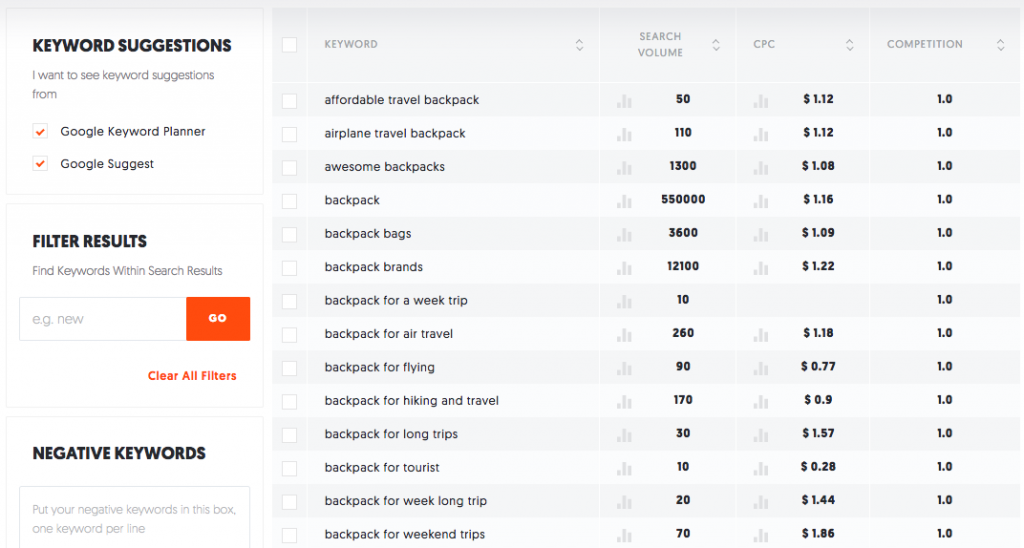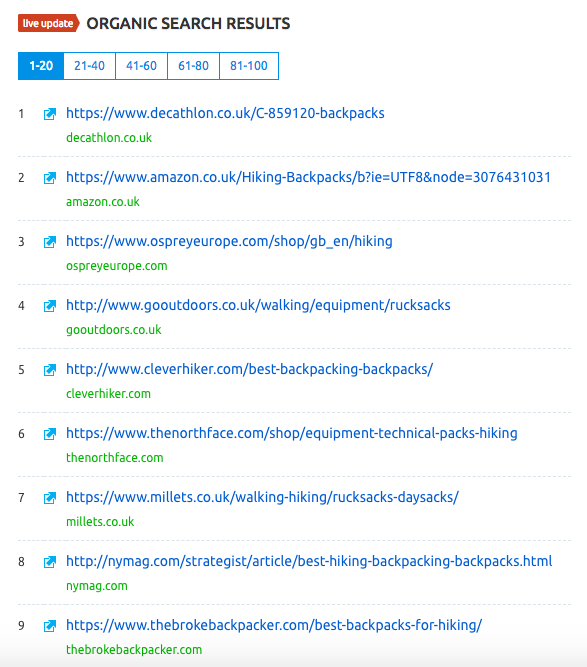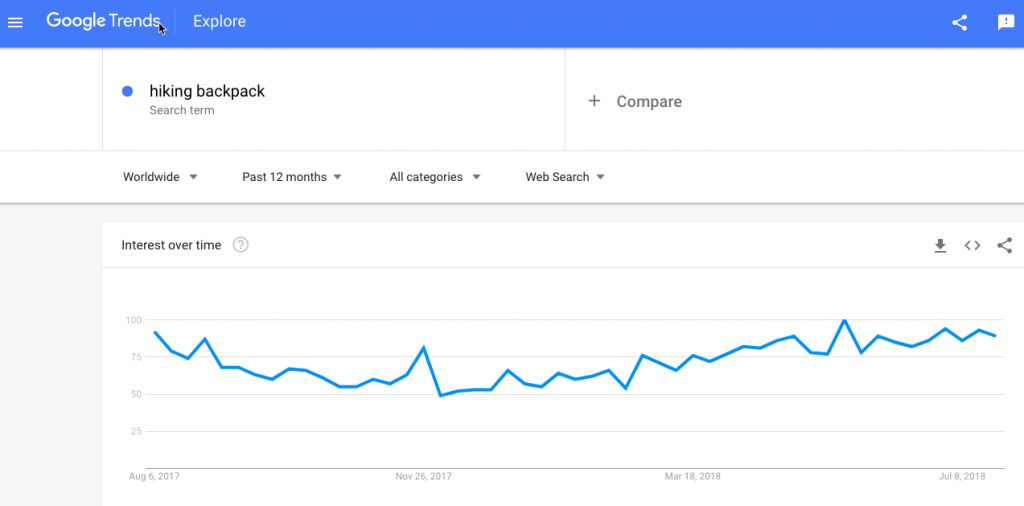Five strategies for choosing your ecommerce niche
Your dream of running a thriving ecommerce business starts with choosing the right niche and figuring out what to sell. But how do you know which niche is right for you?
This is usually the biggest hurdle that people face when starting an ecommerce business. Some spend weeks, even months, to finally pick a niche, hoping it will turn into a profitable business.
Want to increase the chances of choosing a viable, lucrative niche? Read on to learn which strategies you can use to help take the confusion and stress out of the selection and research process, and pick that ecommerce niche that’s right for you.
But first…
What’s an ecommerce niche?
Your ecommerce niche is a specific category into which your products fall. For example, travel gear is a broad niche. Travel backpacks or even hiking backpacks are much narrower.
When you choose your ecommerce niche, you brand will revolve around it and around your audience’s pain points that your product solves.
If you’re afraid to narrow down your niche, thinking you’ll drive away potential customers, think again. When you’re in a niche market, you’re actually able to attract those people who really want what you sell.
On the other hand, when your niche is too broad, you’ll likely try to attract everyone and end up attracting very few. Your message will be general and you’ll compete with lots of businesses whose niche is broad and are selling the same products as you. That’ll make it much more difficult to stand out and to attract and retain customers.
Why do you need an ecommerce niche?
Approximately 87% of U.K. consumers have bought at least one product online in 2016-2017, and the United Kingdom is second only to Norway for making ecommerce purchases in Europe.
So there’s never been a better time to start an ecommerce business. But while you will enjoy a surge in customer interest, you’ll also face more online competition. That’s why it’s so important to choose a niche as it’s the key to long-term success.
The strategies below will put you on track to discover the right niche for your online store.
1. Follow your passions and interests
The great thing about starting an ecommerce business is that you can select a niche based on your passions, hobbies and personal interests.
There are two main reasons why you should be passionate about your chosen niche:
- You’re knowledgeable on the subject, and always keen to learn more and keep up with trends. You’re also able to evaluate and pick the best items for your store that you know prospects will enjoy. In addition, you’ll find it easier to professionally deal with customer queries, to educate, guide and assist them so they’re happy with their purchase. And you know how important customer experience is to an online store’s success.
- You’ll feel more motivated to keep going when things get tough. Running a business means putting a lot of time, resources and energy into it. If you’re not passionate about the niche or product you’re selling, it won’t be long until you lose your motivation and want to call it quits. In other words, if you’re not passionate about your chosen niche, you’re more likely to fail. But if you love what you do, you’ll feel motivated to deal with and overcome any challenges that may arise.
So the first step to choosing your ecommerce niche is to make a list of the things you’re passionate about.
2. Decide how your business will position itself within the wider industry
Now that you’ve decided what you’re passionate about, it’s time do to your research and see if you can turn that passion into a profitable business. In other words, you need to be sure that people want to buy what you’re looking to sell.
Now, when deciding on a smaller niche within a larger industry, you’ll want to find the right balance between competition and opportunity. This means that your niche should be less competitive and require minimal resources. However, it should be large enough to support a growing business.
But how can you decide whether a niche is worth pursuing?
This is where market research comes in. It allows you to get a better understanding of that niche, including which search terms are common, who are the main competitors and how they market themselves to attract customers.
So take the time to research your chosen niche to find out whether:
- People search this niche often enough. Your chosen keyword should be popular but not too competitive. To get an idea, you should go with a niche that gets between 10K and 100K searches. More than that, and you’ll face fierce competition, which means you’ll have a hard time ranking high on search engine results page (SERPs). And low visibility in the SERPs means fewer prospects and customers.
- Competition is fierce, or whether the niche is already taken by online retail giants. If it is, winning your spot can be quite a challenge.
Start with simple keyword research to see what terms people are searching for in regard to your niche. You can use tools like Ubersuggest and SEMrush to find out how popular a search term is, as well as to get suggestions and ideas for related keywords.
For example, if you go to Ubersuggest and enter a keyword like “travel backpacks”, here’s what you’ll get:

This tells us that “travel backpacks” is competitive but has a very good search volume.
Now, if you scroll down the page, you’ll see a list of keyword suggestions which can help you to come up with narrower keywords such as “backpack for weekend trips” or “backpack for hiking”.

Next, you should find out more about the competition so you can see who you’re up against. If several popular sites already dominate the space, you might not want to take them on.
Say you’ve decided to focus on hiking backpacks. Now go to SEMrush and run a search for your keyword. If you scroll down to the section labelled “Organic search results”, this is where you’ll find your biggest competitors.

Take a close look at each website to decide whether you’ll be able to compete.
3. Track the trends
You should always go with a niche that shows a consistent upward trend because that means the public interest toward that niche is constantly growing.
So go to Google Trends and type in your niche or main keyword into the Explore bar to see the changes in public interest toward this topic over time.

You can change the search settings in order to track the public interest toward your niche over a specific period of time or in a particular country or region.
If you scroll down the page, you’ll also see related topics and related queries. These can help you to find a better niche and also to create a list of the most promising keywords related to your future online shop.
4. Start with a problem
A critical step you need to take is to determine what pain points your products are solving. Of course, this also means taking the time to get to know your ideal customer and figuring out how your products can help solve their problems.
For example, FitBit doesn’t just sell activity trackers. They help people to stay motivated to lead a healthier life by tracking their activity, exercise, food, weight and sleep.
So whatever you decide to sell, think about the pain points that people might have that your products can help solve.
5. Validate your niche
Often, a niche may look promising after some initial research, but as you invest time, money and energy into launching it, you realise it’s not what you expected. More competitors turn up and customers need reassurance and lots of support to finally buy a product.
The solution? Always validate your niche in advance before diving in.
A simple way to do this is to invest a few hundred pounds into a Google AdWords or Facebook Ads campaign. By setting up paid campaign and promoting the products you want to sell, you can test the waters and see what the interest level is.
Create a landing page with signups for more information to send the traffic to. Next, analyse the results to determine whether there’s enough demand and commercial intent for the niche you’re testing.
If you need help setting up your paid campaigns, we’ve got you covered with two fantastic free courses that walk you through all the steps to follow to get started with your ad campaigns on Facebook, Twitter and Google:
- Learn how to set up your very first Facebook or Twitter Ads campaign
- Find out how to create your first ad campaign on Google
Wrapping up
Sometimes, when you get excited about starting an ecommerce business, it’s easy to overlook potential pitfalls. Hopefully, these five simple strategies will help you to evaluate potential products and niches more efficiently and increase your chances of success.
